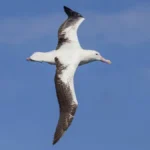
The echidna is a type of primitive mammal belonging to the monotreme group (mammals that lay eggs). The genus Echidna consists of two species: the short-beaked echidna and the long-beaked echidna. The long-beaked echidna only lives in the highlands of New Guinea. The echidna can be found in forests, thickets, grasslands, and woodlands. The echidna is a very ancient animal: it coexisted with dinosaurs on earth. The long-billed echidna is an endangered species. For the echidna to survive, habitat loss, fire, drought and traffic accidents are essential.
Echidnas found in South Australia tend to be much darker in colour than their eastern states counterparts.
Echidna is small animal. It reaches 13.5 to 17.5 inches in length and 6.5 to 14.5 pounds in weight.
Pure white and even red-headed echidnas have been spotted on Kangaroo Island.
Body of echidna is covered with two types of hairs. Short hair acts like a fur which maintains the body temperature. Long hairs turn into spines which provide protection against predators.
From mid-May to early September, male echidnas actively seek out females to mate.
Spines are made of keratin which is the same substance that builds human hair and nails. Spines are creamy in color and they can reach 2 inches in length.
The male suitors follow the female for long distances until the female is ready to mate.
Echidna has slender and elongated snout which serves as a nose and mouth at the same time.
Male echidnas have a four-headed appendage.
Echidna has long, sticky tongue, used for catching of its favorite food: ants and termites. Besides that, echidna eats grubs, insect larvae and worms.
Along with the platypus, the echidna is the only other living egg-laying mammal species.
Echidna does not have teeth. Instead, it uses strong pads in the mouth to grind the food before it is swallowed.
Almost a month after mating, the female deposits a single, soft-shelled, leathery egg into her pouch. The gestation period is quite quick – after only ten days the baby echidna hatches.
Echidna is active both during the day and night. It can detect underground prey by using sense of smell and by recognizing electrical signals of the insect’s body.
Baby echidnas are called ‘puggles’.
When the prey is detected, echidna digs a hole using sharp claws and pointed snout.
Their tongues work very quickly, enabling them to slurp up ants, worms and insect larvae.
Main predators of echidna are dingoes, eagles, feral cats, foxes and Tasmanian devils. When faced with danger, echidna will curl in a ball or hide in a crevice. In both cases, it will expose its spines to prevent predators from eating it.
The claws on an echidna’s hind limbs are curved backwards to help them dig, which is another way they help protect themselves from danger as they can dig their way out of trouble.
Echidna is very strong animal. It can lift the load that is double of its weight.
Echidnas have the lowest body temperature of any mammal, 32°C (89°F).
Echidna is very clever animal. It is smart almost like a domestic cat.
Their body temperatures are not controlled in the same way as that of other mammals, and can fluctuate by up 6–8°C over the course of the day.
Echidnas mate during July and August. At the beginning of the mating season, female develops a pouch. 22 days after mating, female will lay one egg into the pouch. Ten days later, blind and hairless baby will hatch.
Male echidnas may also mate with hibernating females.
Unlike other mammals, echidna does not have nipples and mother feed her baby with milk that is coming from pores of two milk patches. Baby spends 45 days in the pouch, until its spines develop completely.
Echidnas are mammals without nipples.
Baby echidna, also known as puggle, depends on the mother’s milk even after it leaves the pouch. Puggle will remain hidden in the burrow and it will continue suckling until it reaches seven months of age.
While the platypus has 40,000 electroreceptors on its bill, echidnas have only 400-2,000 electroreceptors on their snouts.
Echidna can survive up to 50 years in captivity.
The echidna has a very large brain for its body size.








